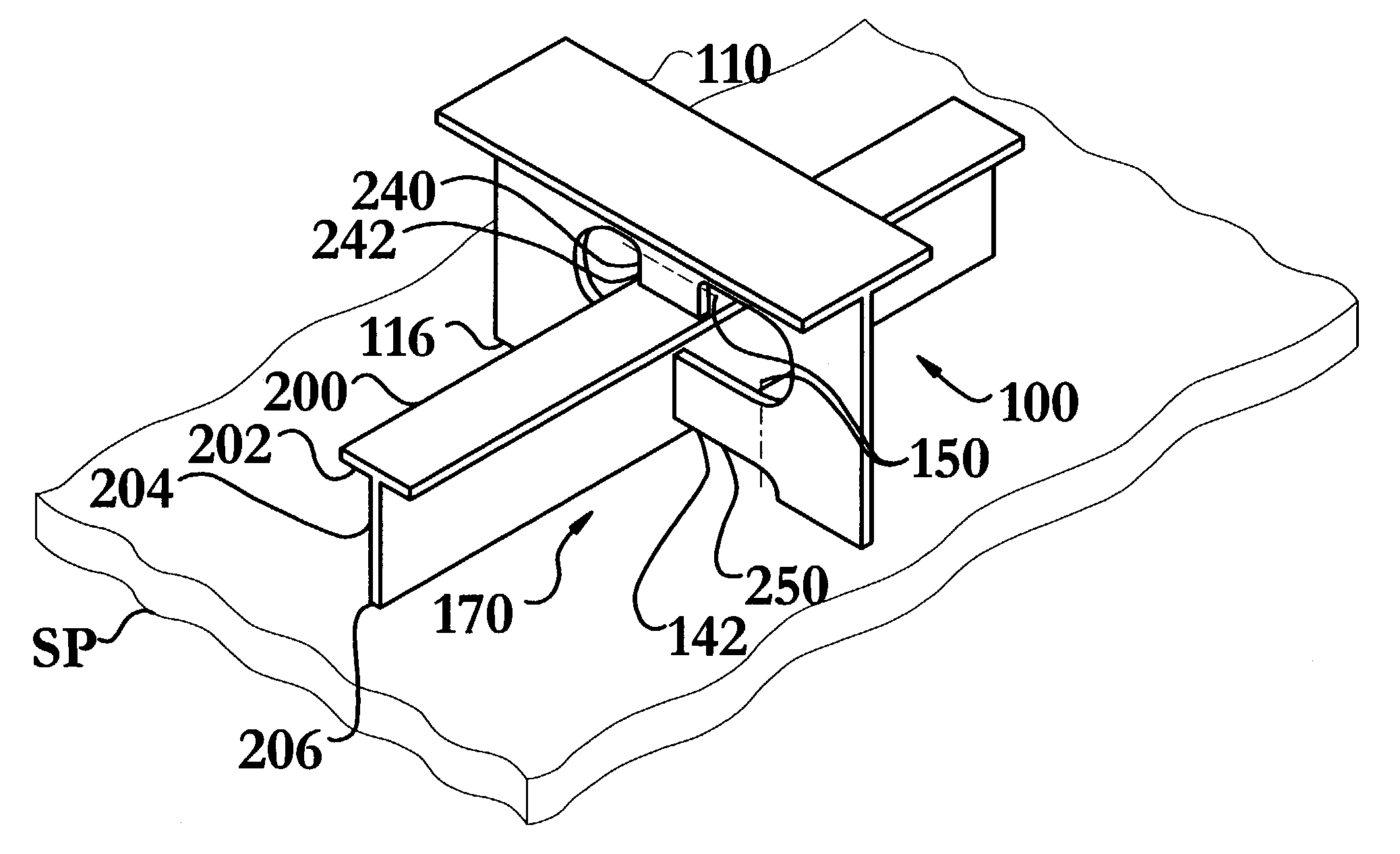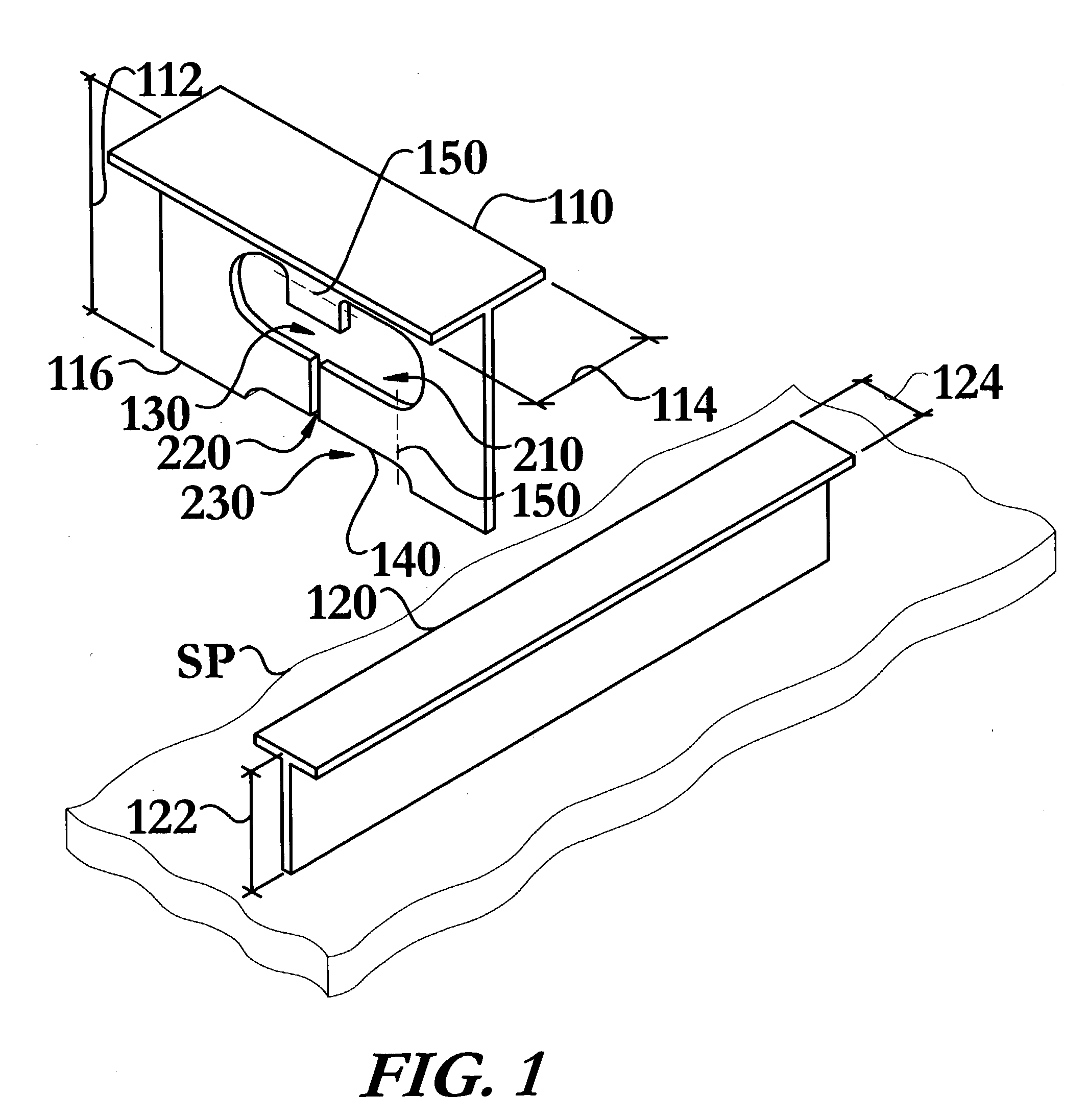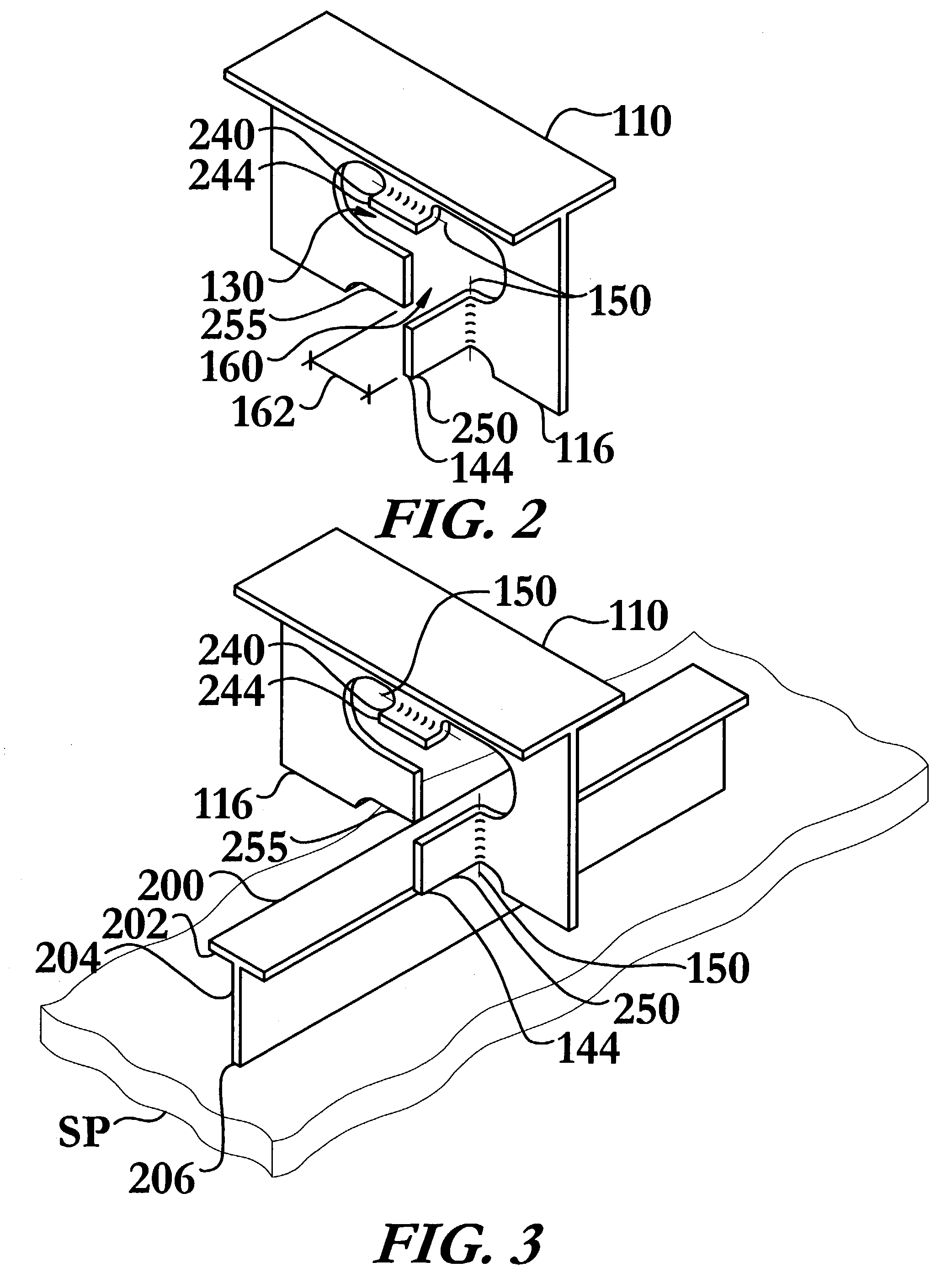Intersecting structural member and a method for joining same
a structural member and interconnection technology, applied in the field of structural joining, can solve the problems of increasing costs and complexity, difficult to achieve, and creating problems at each intersection of structural members, so as to facilitate the bending of stem engaging tabs, reduce the amount of tab material, and reduce the force required to bend
- Summary
- Abstract
- Description
- Claims
- Application Information
AI Technical Summary
Benefits of technology
Problems solved by technology
Method used
Image
Examples
Embodiment Construction
[0044]The intersecting structural member and method of joining same of the instant invention enables a significant advance in the state of the art. The preferred embodiments of the apparatus accomplish this by new and novel arrangements of elements and methods that are configured in unique and novel ways and which demonstrate previously unavailable but preferred and desirable capabilities. In particular, the instant invention's use of a keyway and at least one bendable tab replaces the plurality of welding collars needed in prior art methods, as illustrated in FIG. 6, to effectively join structural members, when one member passes through a non-tight aperture in another structural member.
[0045]The detailed description set forth below in connection with the drawings is intended merely as a description of the presently preferred embodiments of the invention, and is not intended to represent the only form in which the present invention may be constructed or utilized. The description set...
PUM
 Login to View More
Login to View More Abstract
Description
Claims
Application Information
 Login to View More
Login to View More - R&D
- Intellectual Property
- Life Sciences
- Materials
- Tech Scout
- Unparalleled Data Quality
- Higher Quality Content
- 60% Fewer Hallucinations
Browse by: Latest US Patents, China's latest patents, Technical Efficacy Thesaurus, Application Domain, Technology Topic, Popular Technical Reports.
© 2025 PatSnap. All rights reserved.Legal|Privacy policy|Modern Slavery Act Transparency Statement|Sitemap|About US| Contact US: help@patsnap.com



